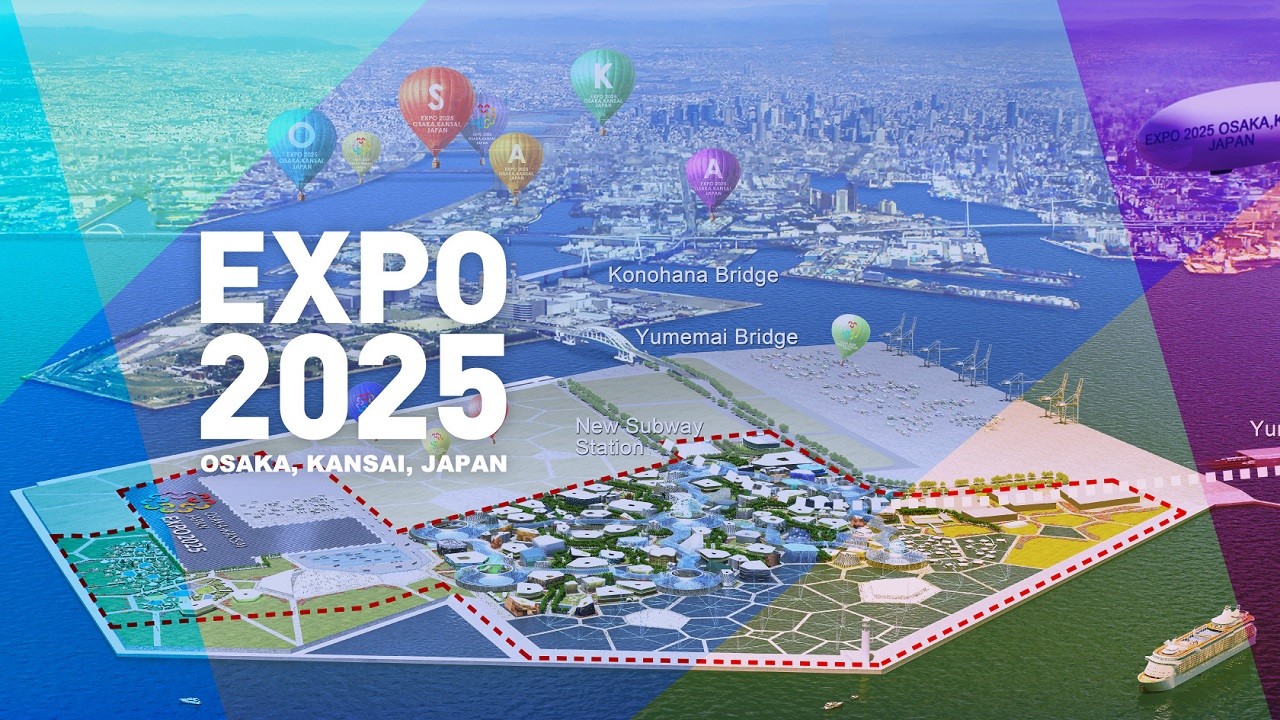-
![Japan Smart Energy Week Tokyo Show March ilikevents]()
Japan Smart Energy Week Tokyo Show March
Tokyo , Japan
-
![Middle East Energy ilikevents]()
Middle East Energy
Dubai , United Arab Emirates
-
Integrated Systems Europe
Barcelona , Spain
-
![PRODEXPO ilikevents]()
PRODEXPO
Moscow , Russia
-
![World Future Energy Summit (WFES) ilikevents]()
World Future Energy Summit (WFES)
Abu Dhabi , United Arab Emirates
-
![ees Europe ilikevents]()
ees Europe
Munich , Germany
-
![POWER-GEN International ilikevents]()
POWER-GEN International
سن آنتونیو , United States of America
-
ENERtec
Kuala Lumpur , Malaysia
News of Expo 2025 Osaka
Time left to the end of event
Available services for Expo 2025 Osaka
Expo 2025 Osaka travel services
Expo 2025 Osaka Exhibition services
Most visited Food & Beverage
Video clips of Expo 2025 Osaka
More Information about Expo 2025 Osaka
- More Less
Characteristics of Osaka-Kansai
The Osaka-Kansai region was home to the foundation of the ancient Japanese state. Therefore, the region has many resources for historical tourism, including World Heritage sites, national treasures, historical buildings, and important cultural properties, as well as a wide range of cultural resources, including Shinto shrines and Buddhist temples, traditional performing arts, and Japanese cuisine. Additionally, the region boasts various traditional performing arts, including the Ningyo Joruri Bunraku puppet theatre, which is inscribed on UNESCO’s Representative List of the Intangible Cultural Heritage of Humanity; Kamigata kabuki, which features a unique regional style; and Noh. The region has also long enjoyed a nationwide reputation as home to various styles of comedy, including Kamigata rakugo, the traditional art of one-man comic storytelling featuring a unique regional style and stories; and manzai, a comic dialogue by a few comedians. Called the “kitchen for the entire nation” since the Edo Period (17th to 19th century), Osaka particularly has developed so various forms of cuisine that it is known as the city of people extravagant in food. Sports including baseball and football also characterise the Osaka-Kansai region. In industrial terms, the Kansai region is characterised by the concentration of businesses and research institutes in a wide range of fields, including the environment, life sciences, and manufacturing, as well as being home to traditional crafts and artisanship. The region leads Japan with its mastery of the most advanced technologies, including the latest technologies which will help achieve Society 5.0. The region also embraces the culture of eagerly creating new, unprecedented things, as seen in the fact that the region was the world’s first to introduce futures contracts. In terms of its relationships with the rest of the world and Asia, this region serves as an Asian hub for international trade and transportation with airports and ports that can handle a large amount of freight, especially ports that can accept large cruise ships. The region boasts a wide variety of geographic features, from mountains to plains, blessed with rich natural environments that enable people to enjoy seasonal changes in scenery unique to Japan. These natural, cultural, and historical features have made the Osaka-Kansai region a “golden route” or a popular destination for both domestic and international tourists, together with Tokyo. As seen above, the Osaka-Kansai region has developed based on great artisanship and technology while maintaining the component areas’ individualities and diversity underpinned by their respective history, culture, tradition, and ethos. This region plays an essential role in the Japanese economy, industry, and culture.
Theme
Designing Future Society for Our Lives The theme “Designing Future Society for Our Lives” makes individuals think how they want to live and how they can maximise their potential. It is also intended to drive co-creation by the international community in designing a sustainable society that supports individuals’ ideas of how they want to live. In other words, the Expo will ask a straightforward question to everyone, “What is the happy way of life?” for the first time. The Expo will correspond to this time when new social challenges, including expanding economic gaps and heightened conflicts, are emerging while science technologies are evolving, including AI and biotechnologies, that will present changes to humankinds, for example, extended life spans. While values and ways of living have become increasingly diversified in recent years, technological innovations enable everyone to access and communicate a hitherto unimaginable amount of information. Fully considering such progress, Expo 2025 Osaka, Kansai, Japan, will feature health, medical, and other advanced initiatives, including carbon neutrality 4 and digitisation, and collect wisdom and the best practices from around the world to provide solutions to various issues with diverse values considered.
Venue
Yumeshima Island, on the waterfront of Osaka City The site for the Expo is located in Yumeshima, an artificial island located on the waterfront in Osaka that offers visitors a view of the Seto Inland Sea. We will promote the Expo as the one connected to the world through the surrounding sea and sky, as well as providing programmes taking advantage of the venue’s location. With an area of 1.55 km2 , the venue will have a pavilion area in its centre, with waters in its southern part and greenery in its western part. For further information, please click here . Venue of Expo 2025 Osaka
Weather Forecast of Expo 2025 Osaka
Comment
You can also enter your comment about this event
Event rate of 3 vote
Expo 2025 Osaka will be held 13 Apr to 13 Oct 2025 in Osaka, Japan. Expo 2025 Osaka will provide the world with an opportunity to come together in one “place” at this time to explore the theme of “life.” This Expo will facilitate interactions between people with diverse values from around the world, resulting in new human networks and creative endeavours. We aim to make Expo 2025 Osaka, Kansai, Japan, an international exposition that can share hopes for a brighter future with the world by overcoming the current global crisis, protecting people’s lives, and reflecting on life and lifestyles. Expo 2025 Osaka is an event and I like events...
Category












